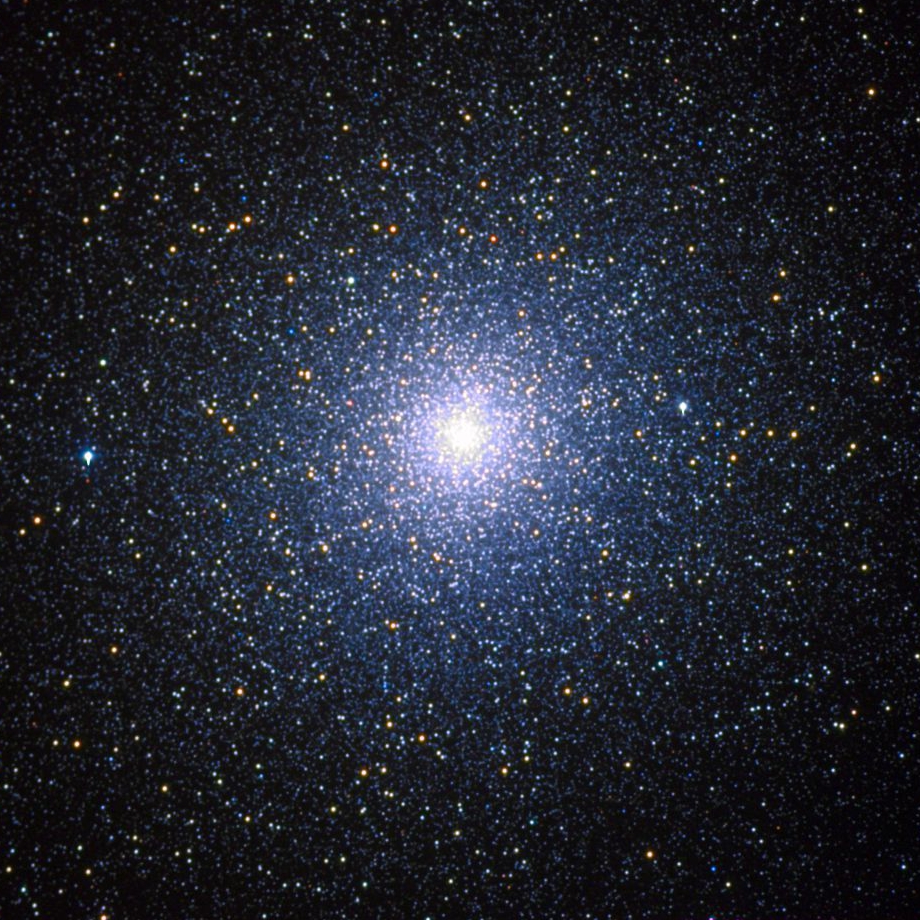
Click here to see a larger version
NGC 104 is the second brightest globular cluster in the sky. It is second only to NGC 5139, the Omega Centauri cluster. Also being called 47 Tucanae, NGC 104 is an easy object for any telescope (even visible with the naked eye). Globular Clusters have many more stars than open clusters. This one is no exception to the rule and it contains about one million stars, some of which are x-ray binary systems.
A recent search for exoplanets with the Hubble Telescope (with no detections on 34,000 stars), led to the conclusion that these bodies are rare or absent in globular clusters, probably due to the absence or low concentration of heavy elements. This cluster is, angularly, very close to the Small Magellanic Cloud.
Additional Information
Object
Name(s): NGC 104, 47 Tuc, Caldwell 106
Type: Globular Cluster
RA: 00h 24m 03.7s
Dec: -70º 04’ 58.8”
Constellation: Tucana
Size (arcmin): 30
Magnitude: +3.5
Distance: 15,000 ly
Image
Date: 2014-08-02
Location: SSO near Coonabarabran, NSW Australia
Size (arcmin): 37×24
Telescope: Planewave CDK 20” f/4.5
Camera: FLI PL6303 (3072x2048pix)
Guiding: not recorded
Total exposure: 42 min (L: 10.5min; RGB: 31.5min)
Processing: CCDStack, Photoshop CC 2016 and PixInsight